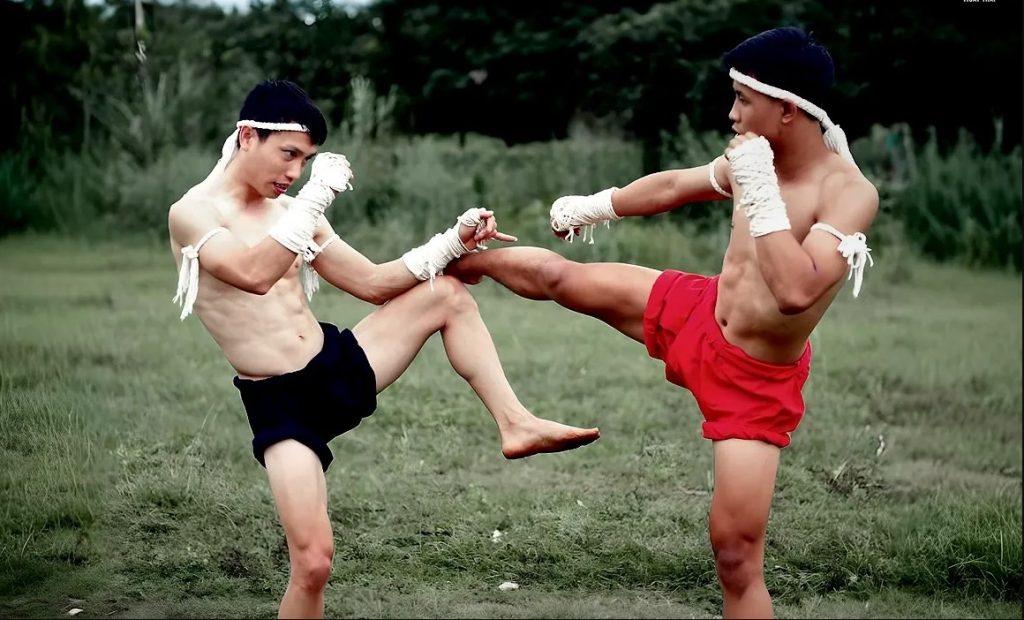Long: Muay Thai, also known as the “Art of Eight Limbs,” is a dynamic and powerful martial art from Thailand that incorporates punches, kicks, elbows, and knee strikes. For many newcomers, one of the most common questions is: “How long does it take to learn Muay Thai?”
Table of Contents
Long: The answer depends on several factors, including your goals (fitness, self-defense, or competition), your training frequency, and your natural aptitude. In this article, we’ll explore the timeline of learning Muay Thai, break down the stages of progression, and help set realistic expectations.
Factors That Affect Learning Time
Long: Before jumping into timelines, consider the following variables that can significantly influence your progression:
| Factor | Impact on Learning |
|---|---|
| Training Frequency | More sessions per week lead to faster development of skill and conditioning. |
| Athletic Background | Prior experience in combat sports or high-level fitness accelerates learning. |
| Quality of Instruction | Access to knowledgeable coaches speeds up technical improvement. |
| Personal Goals | Learning for fitness is quicker than preparing for competition-level proficiency. |
| Age and Health | Younger individuals with better physical health often progress more quickly. |
| Consistency and Dedication | Sticking to a schedule matters more than sheer volume of training early on. |
Basic Learning Milestones in Muay Thai
Stage 1: Beginner (0–6 Months)
At this stage, students focus on fundamentals:
- Proper stance and footwork
- Basic strikes: jab, cross, hook, uppercut, roundhouse kicks
- Defensive techniques: blocks, checks, parries
- Shadowboxing and pad work
- Introductory clinch work
Training Frequency & Time to Competence:
| Sessions/Week | Time to Basic Competence |
|---|---|
| 2 | 6–8 months |
| 3–4 | 3–5 months |
| 5–6 | 2–3 months |
Long: Consistency is critical here. Even two sessions per week will yield results over time, but progress compounds with more frequent training.
Stage 2: Intermediate (6 Months–2 Years)
Long: By now, students should have solidified basic techniques and begun developing their own fighting style. This stage includes:
- Combinations and timing
- Feints and counters
- Intermediate clinch and sweeps
- Sparring (light to moderate intensity)
- Understanding ring strategy and movement
Progress Checkpoints:
| Skill | Typical Mastery Timeline |
|---|---|
| Combination Drills | 6–12 months |
| Sparring Comfortably | 9–18 months |
| Ring Movement | 12–24 months |
This is often the stage where many practitioners plateau, especially if their training frequency drops or their goals shift from improvement to maintenance.
Stage 3: Advanced (2–4 Years)
An advanced Muay Thai student exhibits fluid movement, adapts tactics on the fly, and demonstrates strong ring IQ.
- Advanced clinch control
- Elbow/knee setups and counters
- Conditioning for endurance sparring
- High-intensity sparring and mock fights
- Understanding scoring and fight tactics
At this stage, practitioners may start helping beginners or even consider competing.
| Aspect | Time to Mastery |
|---|---|
| Full Clinch Proficiency | 2–3 years |
| Elbow/Knee Mastery | 2–4 years |
| Sparring with Strategy | 2.5–4 years |
Stage 4: Competitive Level (3–5+ Years)
Fighters who train for competition often train twice daily and live a Muay Thai-centered lifestyle. This stage requires:
- Fight-ready conditioning
- Strategy based on opponents
- Regular competition experience
- Full rules sparring and fight camps
Competitive Readiness Timeline:
| Training Intensity | Time to Fight Readiness |
|---|---|
| 3x per week (hobbyist) | 2–3 years (amateur level) |
| 5–6x per week (dedicated) | 12–18 months (amateur fights) |
| 2x daily (full-time fighter) | 6–12 months (if athletic base) |
Common Goals and Time Estimates
Different people train for different reasons. Here’s a guide to how long it typically takes to reach various Muay Thai goals:
| Goal | Timeframe | Notes |
|---|---|---|
| Basic Fitness & Technique | 3–6 months | 2–3 sessions/week recommended |
| Self-Defense Proficiency | 6–12 months | Includes situational awareness and defensive sparring |
| Confident Sparring | 12–24 months | Comfort with controlled contact, distance, and timing |
| Amateur Fight (Smoker Event) | 12–24 months | Consistent 4–6x/week training with coach oversight |
| Pro-Level Competence | 3–5+ years | Often involves living/training in Thailand or full-time |
Tips to Accelerate Learning
- Train Consistently
Even 2–3 times a week, over time, builds skill faster than sporadic intense sessions. - Drill Outside the Gym
Shadowbox at home, watch fights, visualize techniques. Mental reps are powerful. - Spar Regularly (Safely)
Controlled sparring develops timing, reaction, and adaptability faster than drilling alone. - Listen to Coaches
Accepting critique and making small corrections rapidly improves technique. - Get Fit
Cardio and strength training outside of Muay Thai improve overall performance.
Training in Thailand vs. Elsewhere
| Training Location | Typical Weekly Hours | Time to Intermediate Skill |
|---|---|---|
| Local Gym (3x/week) | 3–6 hours | 9–12 months |
| Thailand Camp (2x/day) | 20–30 hours | 3–5 months |
Muay Thai is both a martial art and a lifelong journey. Most practitioners will start to feel confident with the basics in about 3–6 months, while intermediate to advanced proficiency takes 1–3 years. Reaching a competitive level can take anywhere from 12 months to 5+ years, depending on the intensity of training.
Rather than focusing on how long it takes, embrace the process. The physical fitness, mental resilience, and cultural appreciation you gain from Muay Thai are well worth the time.


